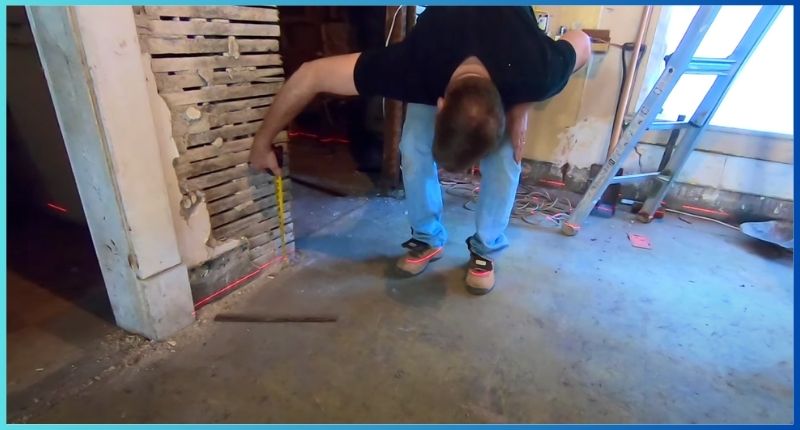
Sagging floors are a common homeowner issue, presenting a safety hazard and compromising the aesthetic appeal of a living space. Imagine walking across a room and suddenly finding a dip or a noticeable unevenness in the floor—unpleasant and potentially dangerous, especially for those with mobility issues. Sagging floors can be caused by various factors, from inadequate foundations to moisture damage and even improper floor support structures. This article will delve into the intricacies of sagging floors, exploring their causes and providing practical solutions for achieving a level and safe living space. We will cover everything from simple DIY repairs to more complex structural issues. We’ll use illustrations and real-world examples to offer clear actionable steps and make sure you understand how to address these issues.
determineing the Culprit: Uncovering the Causes of Sagging Floors
Common Causes of Floor Sagging
Sagging floors often outcome from underlying structural issues and sometimes, even simple neglect can contribute to the problem. Moisture damage is a prevalent culprit, often stemming from leaks or inadequate waterproofing. Over time, excessive moisture can weaken the support structures, particularly floor joists and subfloors. Poorly installed or inadequate subfloors can lead to uneven settlement and subsequent sagging floors. Another common cause is the settlement of the foundation, which can gradually shift and compromise the stability of the floor structure over time. Improper floor support, such as insufficient or damaged joists, can cause significant problems with floor integrity. Lastly, the accumulation of heavy objects over time, such as furniture or belongings, can create significant pressure, causing the floor to sag over time.
Diagnostic Steps for Floor Sagging
To determine the precise cause of sagging floors, a thorough inspection is crucial. This may involve visually inspecting the subfloor for signs of moisture damage, looking for cracks in the concrete foundation or floor joists, and checking for loose or shifted supports. A qualified inspector can offer expert opinions, determine potential causes, and suggest appropriate solutions for mitigating the issue.
Implementing Effective Repair Strategies for Uneven Floors
Related Post : The Pursuit of Stability: Avoiding Structural Failures with Home Repairs
Addressing Minor Sagging with DIY Solutions
For minor sagging issues, a DIY approach might be sufficient. Replacing or reinforcing the subfloor can resolve minor sagging. If the problem stems from moisture damage, addressing the water intrusion source and properly drying the affected areas are essential steps. Sometimes, adding support to the sagging floor joists with additional bracing can offer stability and prevent further sagging. Applying additional layers of plywood or other strong materials can effectively distribute weight and help correct minor dips. However, always prioritize safety and consult with a professional if you are unsure about your abilities or the severity of the issue.
Dealing with Significant Structural Damage
Major structural issues, like significant settlement or extensive moisture damage, require professional intervention. Experienced contractors with expertise in structural repairs are essential for ensuring the safety and structural integrity of the entire property. They can assess the extent of damage, recommend appropriate repair solutions, and address the root cause of the issue, preventing future problems. They can use specialized techniques to reinforce weak points in the floor joists or other structural components and offer a long-lasting solution. The use of advanced technologies, such as moisture detection tools, can significantly aid in the diagnostic process, providing accurate information to determine the source of the sagging and develop a suitable remediation plan.
Preventing Future Sagging: Proactive Measures
Maintaining a Dry Environment
Protecting your floors from moisture damage is crucial. Regular inspections for any signs of water intrusion or leaks are necessary. Implementing proper waterproofing measures and addressing moisture issues promptly can effectively prevent further sagging. Adequate ventilation can help prevent moisture buildup in the living space and can be implemented by improving your home’s insulation system.
Safe Loading Practices
Maintaining consistent weight distribution is equally crucial. Avoid overloading specific areas of the floor by strategically arranging furniture and heavy items. Ensure even weight distribution to minimize the strain on any individual component of your floor support system. By adhering to safe loading practices, you can significantly reduce the risk of sagging floors in the future.
Seeking Professional Expertise for Lasting Solutions
Engaging Home Inspectors
Home inspectors play a crucial function in determineing potential issues early on, even before significant damage occurs. Regular inspections can help determine potential problems with your home’s structure, including signs of sagging floors, allowing for prompt interventions. An expert inspection can also ensure that you understand the potential cost implications and timeframe required for repairs. Engaging a qualified home inspector is a proactive measure to maintain a safe and structurally sound home, even before the problem occurs.
selecting Reliable Contractors
Choosing reliable contractors with experience in structural repair is crucial to addressing sagging floors. Get quotes from multiple contractors, thoroughly review their experience, and check for necessary certifications and licenses. Ensure that you understand the full scope of the project and potential additional costs. Thorough study and due diligence ensure you have the optimal qualified professionals working on the issues in your home.
The Importance of Consistent Home Maintenance
Regular Inspections and Maintenance
Maintaining a regular inspection schedule for your home is essential for early identification of any signs of damage, including sagging floors. By proactively addressing any minor issues, you can prevent them from escalating into costly and time-consuming repairs. Regular maintenance reduces the risk of significant structural damage and can extend the life of your home.
In conclusion, addressing sagging floors is crucial for a safe and comfortable living environment. By understanding the causes and implementing the right solutions, homeowners can prevent further damage and maintain the structural integrity of their homes. Consider a professional inspection to determine the root cause of the sagging and select the appropriate repair method. Contact a qualified contractor for a consultation and quote, ensuring that you get the optimal solution for your sagging floors and long-term peace of mind.